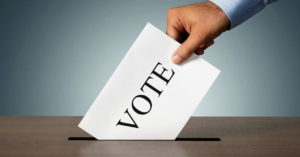I am a blue voter who lives in a red state. I tilt toward Democratic candidates for president while residing in heavily Republican Texas.
Now that I’ve got that out of the way, I want to redeclare my view that efforts to circumvent the Electoral College are counterproductive. They shouldn’t go forward.
However, it appears that Democrats in states that lean blue are intent on monkeying around with the Electoral College with legislation that bypasses the system codified in the U.S. Constitution by the nation’s founders.
They want their states to cast their electoral votes for whichever candidate wins the popular vote. It’s part of what is called the National Popular Vote Interstate Compact.
Is the nation’s electoral system in peril of breaking down? I don’t believe that is the case.
We have had 59 presidenti
al elections in this country since its founding. Only five times has the candidate with fewer votes been elected president.
However, what has alarmed those who want to overhaul the electoral system insist that such a trend is in danger of escalating. They point out that it’s happened twice just since 2000! George W. Bush was elected that year despite getting about a half-million fewer votes than Al Gore. Then in 2016 Donald Trump was elected with nearly 3 million fewer votes than Hillary Rodham Clinton.
It fascinates me to know that the move to tinker with the Electoral College is coming from aggrieved Democrats, given that the 2000 and 2016 elections went to the Republican nominee for president.
We are witnessing what I believe is a knee-jerk reaction to an overblown issue. It kind of reminds of me how Republicans in Congress pushed for enactment of the 22nd Amendment limiting presidents to two elected terms; they did so after Democrat Franklin D. Roosevelt won election to four consecutive terms as president.
Let me reiterate an essential point. If we’re going to change the electoral system, then eliminate the Electoral College. It is an absurd notion to tweak and tug at the edges of the system.
I happen to still believe in the Electoral College system of choosing our president. I endorse the idea that it helps spread the power among more states, giving less-populated states a stronger voice in choosing our head of state.
If we’re going to mess with the Electoral College, then go all the way.
Or else leave it the hell alone!

